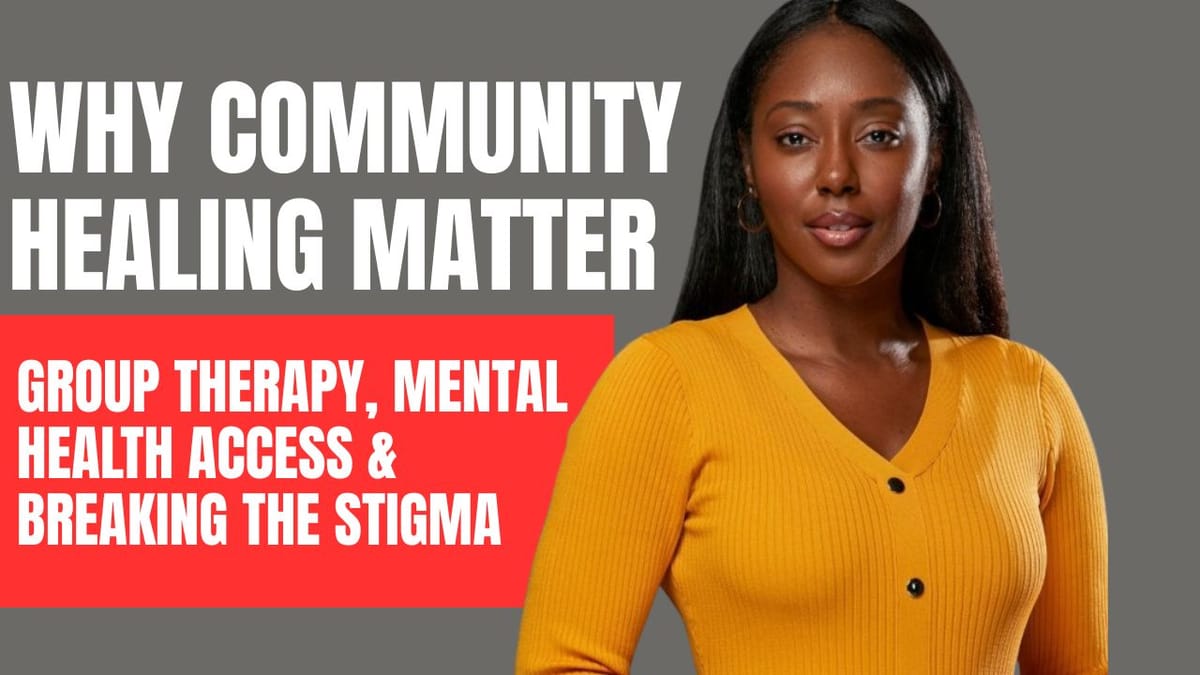Group Support Is More Than a Trend—It’s a Lifeline

Sponsored by MentalHappy
Support groups used to be something you heard about in church basements or hospital pamphlets. Now, they’re becoming a core part of how people access care—and for good reason. In this episode of The Healthy Project Podcast, MentalHappy founder Tamar Blue breaks down why community-based care is growing and essential.
The Gap in Mental Health Support
The traditional healthcare model leaves many people stranded after that initial diagnosis or crisis. As Tamar puts it, “You get a prescription—but then what?” That “then what” moment is where MentalHappy steps in. It offers a digital platform for group-based mental and emotional support, helping people deal with the real-world, daily challenges of managing their health or supporting a loved one.
Whether it’s recovering from illness, navigating grief, or coping with burnout, Tamar notes that the emotional toll of health challenges can’t be addressed with medication alone. People need connection. And that’s where the power of group support lies.
Why People Are Choosing Groups Over Traditional Therapy
Let’s be clear—therapists are vital. But not every life stressor requires a one-on-one session. Sometimes, people just need community. Group support provides:
- Shared lived experiences
- Educational tools for navigating new life circumstances
- Emotional validation from others walking similar paths
It’s also more accessible. Tamar points out the shift: people are living farther from family, attending church less, and often navigating life without the built-in support systems that used to exist. Group care helps fill that void.
For Providers: A Scalable, HIPAA-Compliant Solution
MentalHappy isn’t just for people seeking support. It’s also built for providers—therapists, coaches, peer specialists—who are tired of juggling Eventbrite, Zoom, PayPal, and spreadsheets just to run one group. The platform combines everything in one place: onboarding, payments, resources, scheduling, and secure communication.
Plus, in a healthcare system where providers are leaving in droves due to burnout and poor reimbursement rates, Tamar notes that the ability to offer scalable, cash-based group services gives both professionals and patients more options.
Education, Not Just Emotion
One of the most powerful stories Tamar shared involved a woman caring for her mother post-brain surgery. Her doctors were great, but it was in a support group that she learned the practical, lived-in tips that made caregiving safer and more manageable. Things like how to organize the house to prevent falls, what smoothies help with medication intake, and what questions to ask the doctor next time.
This is where community-based care shines. It gives people the education and support that the traditional system often skips over.
The Vision: Support as Standard Care
Tamar’s dream? To see MentalHappy integrated into every hospital system—right alongside MyChart. Emotional care shouldn’t be an afterthought. It should be built into the recovery journey, offered proactively, and made accessible to anyone who wants it.
Action Steps:
- If you’re a health provider or organization, visit mentalhappy.com to explore how you can host or join a support group.
- If you're someone looking for connection, browse MentalHappy’s growing list of virtual communities.
- For patients, caregivers, and advocates, check out the free mental wellness tools and resources at the bottom of MentalHappy’s homepage.
Want to dive deeper into Tamar’s story?
Listen to the full episode of The Healthy Project Podcast featuring Tamar Blue here:
🎙️ Audio version
📺 Watch on YouTube
This episode was brought to you by MentalHappy.
If you or your organization want to partner with The Healthy Project Podcast to spotlight game-changing ideas in mental health, health equity, and digital health innovation, reach out here. Let’s build something impactful together.
Subscribe to The Healthy Project Presents: The Remedy
For more straight-up, culturally-rooted breakdowns of what’s happening in public health—and what we can do about it—sign up here.
